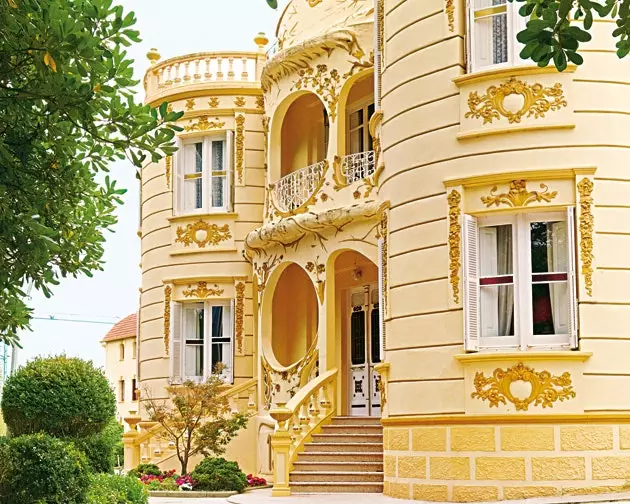
Modernist facade of the Palacete de Peñalba
In the Principality of Asturias, rich in historical buildings of a certain social prestige –whether aristocratic, ecclesiastical or related to the prosperous bourgeoisie–, the term 'palace' has historically not been limited to describing the residences of royalty, not even of the nobles. Here anyone could call his house 'palace', and many did . The meaning that is usually given in the region to this word is simply that of a large private house with a chapel on its grounds. Palaces that have now taken the form of a hotel and that constitute spectacular places to stay in Asturias.
In the same way, the term 'casona' encompasses many types of building and has been adopted by **the quality seal of Casonas Asturianas**, a highly successful hotel chain, whose assortment includes rectories, farmhouses, indiano houses (modernist buildings home of returned emigrants, such as the Palacete de Peñalba that we will see below) and palaces.
1- PEÑALBA PALACE, FIGUERAS (CASTROPOL):
An important peculiarity of Asturian culture are the Indianos houses, extravagant mansions built by wealthy emigrants on their return from the Americas between the end of the 19th century and the beginning of the 20th century. Some have been converted into hotels (Villa Rosario, in Ribadesella, and Villa La Argentina, in Luarca, are surely the best), but this one in Peñalba It is one of the few that bear the name of 'palace' (or, strictly speaking, 'palacete') .
A sign in the small port town of Figueras takes you to 'The modernist palaces': one built in 1912 for Doña Socorro Sánchez (whose late husband, Wenceslao García Bustelo, had made his fortune in Buenos Aires), according to the design of Ángel Arbex, a disciple of Gaudí . And a second, smaller pavilion, built later as a wedding present for her daughter.
Located in a garden designed by Cecilio Rodríguez, the gardener of King Alfonso XIII, they now form a 20-room hotel run since 1987 with verve and talent by Avelino Gutiérrez López and his wife, Josefina. The place is comfortable, unpretentious, with a friendly family style and a slightly eccentric charm. . Architecturally, the main house is an exercise in whimsical modernist style, with stained-glass windows and hydraulic tiles, and original moldings and chandeliers mixed with period furniture, homey-looking paintings, and large, glossy planters. hydrangeas
**The room you have to reserve is the Dome Suite (€180) **, with its four-meter-high vault over the bed. In the past it served as a watchtower and the views of the estuary, with the Cantabrian Sea to the right, are wonderful. If the main house occasionally gives off a three-star whiff (sparsly stocked minibars and slightly dated bathrooms), the hotel's second building is a welcome surprise.
The interiors of this modernist pavilion completely restored in 2003 are by the designer Chus Quirós, who has combined the colonial and modernist style of the original building with the sensitivity of modern design , making generous use of fabrics, wallpapers, screens and artwork. Some rooms have Chinese motifs, others Roman, and the lobby's Art Nouveau mural evokes the area's maritime heritage. From the roof you can see the tiny port of Figueras , where the Peñalba Restaurant, the family business from which the hotel originally emerged, is still open (HD: from €135) .
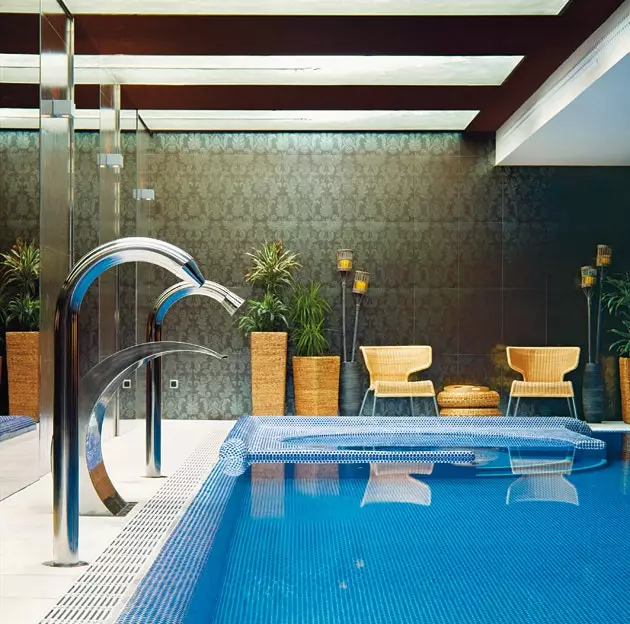
Modernist facade of the Palacete de Peñalba
2- PALACE OF LIGHTS, COLUNGA
East five-star grand luxury hotel (the only one that has received this denomination in Asturias to date) is a lesson in the art of combining the old and the modern in a single architectural package of fluid elegance. The success of the architect Enrique Villar is to have grafted onto a 16th century mansion (practically in ruins after a century of abandonment) a modernist structure in glass and metal , managing to avoid the discrepancy that usually occurs in these cases.
A modern pavilion houses the restaurant, run by the esteemed Asturian chef Fernando Martín, as well as the bar area. The 44 rooms, distributed equally between the old and new wings, stand out for the quality of the finishes, the expensive fabrics and the lavish use of marble, chrome and laminated glass (although the wooden floor shows signs of wear) .
The service is sublime – the hotel has bellboys in uniform and each room receives daily newspapers – and generally works like a charm. The Palacio de Luces has its sights set on becoming the best hotel in Asturias , and it is easy that he has fulfilled this aspiration. The €13 million invested was money well spent (HD: from €226).
**3- LA ZOREDA FOREST CASTLE, LA MANJOYA (OVIEDO) **
this castle –palace in all but name– It began to be built in 1930 for a family of wealthy industrialists on a wooded hill four kilometers from Oviedo. However, it was never completed and had been in ruins for many years when a family that owns hotels and a restaurant bought the estate in 1998 and undertook the complex restoration process.
When this five-star hotel opened in January 2009, the people of Oviedo were dazzled by its glamour, which far exceeded that of the most exclusive traditional hotels in the city. If the exterior, at the bottom of the exuberant groves of the Bosque de la Zoreda, is a stately gray stone castle, the interior is a hymn to contemporary design in a comfortably retro-modern idiom. Brand-mads will be delighted to discover that the bedding is by Rivolta Carmignani and the beauty products by Bvlgari.
The immediate surroundings are wooded and peaceful, although the driveway, dotted with streetlamps above a succession of newly built houses, is somewhat quirky and the dingy factory looming in the distance an unlucky neighbor. Perhaps its biggest drawback is its distance from the city center, but its spa and its pool of 80 square meters They more than make up for it.
The luxurious Arlos restaurant offers exclusive interpretations of local dishes, among which fish dishes stand out. Instead of wine, try one of their new generation ciders –new expression calls–, which are totally dry (HD: from €160).
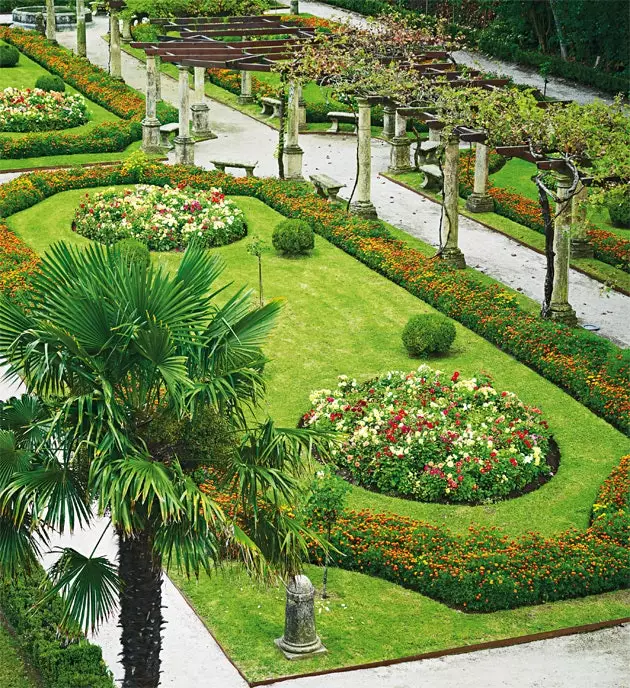
View of the gardens from the new wing of the NH Palacio de Ferrera
4- NH PALACIO DE FERRERA, AVILÉS
The restoration of the Palacio de Ferrera, built at the end of the 17th century for the family of Pedro Menéndez de León, is part of the new climate of optimism and urban regeneration of Avilés , with its Oscar Niemeyer cultural center and its program to revitalize the Nalón estuary. NH has undertaken a restoration that respects the character of the old building while incorporating a modern wing where most of its 77 rooms are located.
The setting is second to none, with the Plaza de España in front and the leafy Parque de Ferrera behind (rooms 11 to 14 on each floor overlook the gardens) . Choose the Prince's Suite , with its balconies that dominate the square and a fabulous and original bed with a hanging headboard, or room 218, known as the 'Marquise Room' , with its slate floor terrace and its views of the park and the church of San Nicolás de Bari.
The hotel offers a wide variety of rich architectural details: its grandiose marble staircase with frescoes on the lower face, its old chapel now occupied by the dining room and its spiral staircase tower built around a ship's mast. It is said that Menéndez de León watched from here the movements of ships in the busy port of Avilés, today guests can watch the transformation of the city (HD: from €69.99) .
**5- PALACIO DE RUBIANTES HOTEL & GOLF, CERECEDA (PILOÑA) **
The hotel-country house concept has arrived relatively recently in Spain , but proof of the genre's vitality is the Palacio de Rubianes, a stone mansion dating from the 14th century (the exquisite spiral staircase is original from the Middle Ages) rescued for luxury tourism by his owners, José María Martínez-Noriega and his wife, Isabel Campuzano.
In a 250-hectare private estate located in the foothills of the Sierra del Sueve, abandoned for years, is a building restored and transformed by Basque designer Fernando Castellón into a 23-room hotel . The palace opened its doors in 2008 and is one of the most pleasant places to stay in an area where luxury hotels are not lacking. The hotel is very comfortable and its interiors are beautifully designed in muted tones, quality materials (stone, wood, glass) and natural fabrics that create an environment halfway between the homely and the aristocratic.
Its privileged location, presiding over a lush valley with mountains in the background, is bucolic and peaceful. It has a large granary and a chapel from the 16th century (now equipped for parties and conferences) . The 21st century has added a nine-hole golf course and spa in an old mill . The restaurant housed inside is excellent. The only objection: too much newly laid asphalt makes the entrance look ugly and functional (HD: from €145).
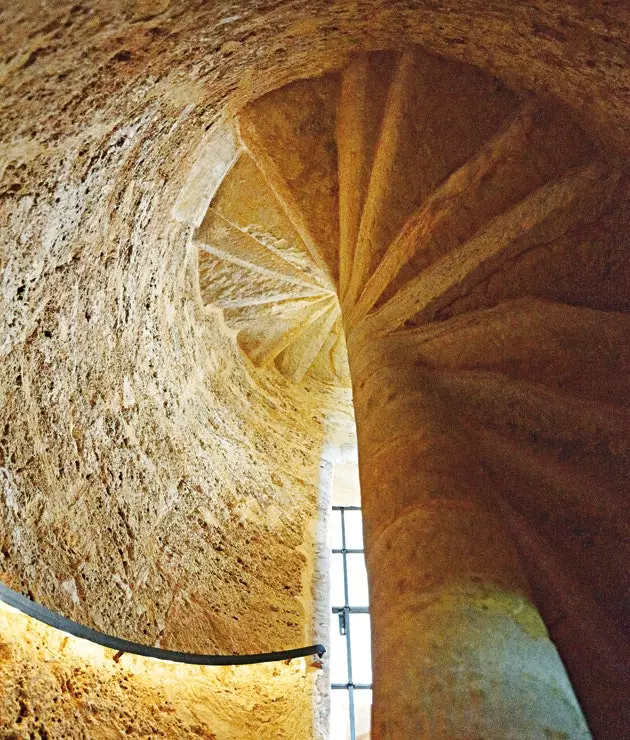
14th century spiral staircase of the Palacio de Rubianes
**6- CUTRE PALACE, VILLAMAYOR (INFESTO) **
Don't be fooled by its name, Seedy is a place name and there is absolutely nothing that can be called neglected in this 16th century mansion (one of the pioneer country-house hotels in Asturias). Its location, on the northern face of the Sierra del Sueve, between forests and pastures, is delightful, and the snow-capped Picos de Europa in the background add drama to the panorama.
The calm here is palpable: you only hear the cawing of the crows, the bells of the village and the wind through the trees . The house itself is a grandiose mass whose antiquity its owners, Javier Álvarez Garzo and his wife Sandra, have not tried to hide, mask, or homogenize: on the contrary, the tower's worn stone staircase is wonderful and the original beams are so dark that almost appear black. Virginia creepers cover the cream plastered exterior walls and the window frames are granite. From the English-style living room you can see an oak tree with an incredible perimeter: they say it is 600 years old.
Where Cutre succeeds or fails is on the inside. Either you love floral decoration or it repels you . And the same goes for chintz curtains, bedspreads and headboards, ornate lampshades, painted furniture, mirror frames and umbrella stands, as well as lace and ruffles in everything you can find. wear lace and ruffles. The rooms are so dimly lit they're almost cavernous, and the casement windows, which block out the light when you close them, are perfect for those who find it hard to fall asleep.
The common areas are crammed with cribs, bird cages, antique dolls and other Victorian objects of British and Spanish origin. There is no doubt about the perfect maintenance of this hotel, nor about the efficient but friendly service . Crappy is officially three stars, but the comfort factor places it much higher (HD: from €85).
7- PALACE OF PRELO, NEXT TO BOAL
If the Asturian east is idyllic, with its ports and the magnificent landscapes of the Picos de Europa, the west is even more peaceful, rural and untouched. The village of Prelo is in the countryside, just outside the pretty town of Boal . Here Antonio Gómez-Mendoza, a student of Economic History and professor at the University of Oxford, decided in 1998 to begin the reconversion of a rustic mansion – modest in size, but with its own chapel – into a small hotel.
There are only five double rooms, three of them with a living room , and some have views of a sinuous landscape of rocky slopes, soft green slopes with chestnut forests and the Bobia and Carondio mountain ranges. The design makes more than a nod to the English style and the silence that reigns in the house is so complete that it is almost disturbing.
There's not much to do apart from reading, listening to music, inspecting the 18th-century chapel, or taking a soothing stroll through the gardens, but the surrounding countryside makes for excellent walks. Further afield you can visit an untouched part of the coastline (Barayo is a protected coastal nature reserve, with a sandy beach at the end of a long walk) and pretty fishing villages like Luarca and Puerto de Vega (HD: from €143).
This report was published in issue 46 of Traveler magazine.
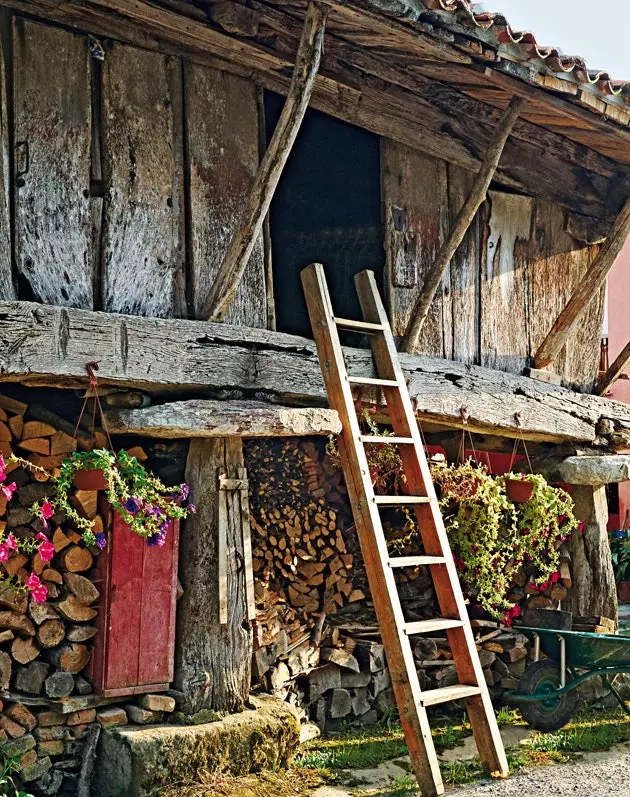
Granary of the Palace of Rubianes
